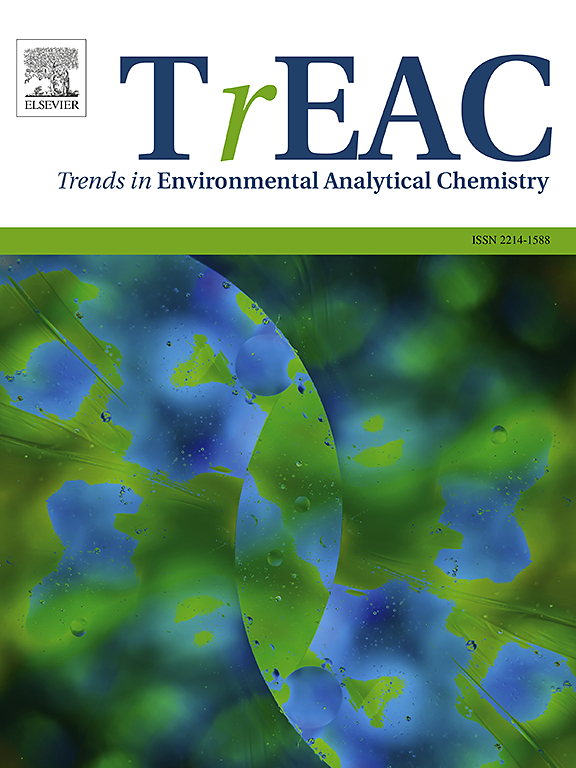Recent progress in excited-state intramolecular proton transfer-based ratiometry fluorescence probes for environmental detection and monitoring
IF 13.4
2区 化学
Q1 CHEMISTRY, ANALYTICAL
引用次数: 0
Abstract
Over 150 years, fluorescence probes have remained a cornerstone for selective detection and imaging a wide range of analytes. Unlike classical monochromatic probes, ratiometric fluorescence probes (RFPs) can self-correct data distortion. In the 75th year celebration of excited state intramolecular proton transfer (ESIPT) and its new role, ESIPT-RFPs and imaging agents provide dual confirmatory signals. RFPs are characterized by their major sensing mechanisms, including ICT, FRET, ESIPT, and monomer-excimer formation. In recent years, researchers have widely studied ESIPT-RFPs for various environmental and biological analytes, including anions, cations, and neutral analytes. As a result, several reports discuss the ESIPT-RFP for detecting and monitoring a numerous of environmental analytes. The 2-hydroxyphenyl benzothiazole and 3-hydroxy flavones ESIPT cores are most widely utilized for the design. This review examines the diverse mechanisms employed for sensing and signal changes of ESIPT-RFPs for environmental detection and monitoring, focusing on neutral molecules, anions, and cations. The ESIPT-RFP probes have two types of sensing signals: two reversible signals and fixed reference signals, which can be red-shifted or blue-shifted. The ESIPT-RFP sensing mechanisms are categorized into Types I, II, and III. This article reviews over 88 published articles on ESIPT-based RFPs for environmental detection and monitoring.
激发态分子内质子转移比率荧光探针环境检测与监测研究进展
150多年来,荧光探针一直是选择性检测和成像各种分析物的基石。与传统的单色探针不同,比例荧光探针(rfp)可以自我校正数据失真。在庆祝激发态分子内质子转移(ESIPT)及其新作用75周年之际,ESIPT- rfp和显像剂提供了双重确认信号。rfp的主要传感机制包括ICT、FRET、ESIPT和单体准分子形成。近年来,研究人员对各种环境和生物分析物的esipt - rfp进行了广泛的研究,包括阴离子、阳离子和中性分析物。因此,一些报告讨论了用于检测和监测大量环境分析物的ESIPT-RFP。2-羟基苯基苯并噻唑和3-羟基黄酮ESIPT芯在设计中应用最为广泛。本文综述了esipt - rfp用于环境检测和监测的传感和信号变化的各种机制,重点是中性分子、阴离子和阳离子。ESIPT-RFP探头有两种传感信号:两种可逆信号和固定参考信号,可以红移或蓝移。ESIPT-RFP感知机制分为I、II和III类。本文回顾了超过88篇关于用于环境检测和监测的基于esip的rfp的已发表文章。
本文章由计算机程序翻译,如有差异,请以英文原文为准。
求助全文
约1分钟内获得全文
求助全文
来源期刊

Trends in Environmental Analytical Chemistry
Chemistry-Analytical Chemistry
CiteScore
21.20
自引率
2.70%
发文量
34
审稿时长
44 days
期刊介绍:
Trends in Environmental Analytical Chemistry is an authoritative journal that focuses on the dynamic field of environmental analytical chemistry. It aims to deliver concise yet insightful overviews of the latest advancements in this field. By acquiring high-quality chemical data and effectively interpreting it, we can deepen our understanding of the environment. TrEAC is committed to keeping up with the fast-paced nature of environmental analytical chemistry by providing timely coverage of innovative analytical methods used in studying environmentally relevant substances and addressing related issues.
 求助内容:
求助内容: 应助结果提醒方式:
应助结果提醒方式:


